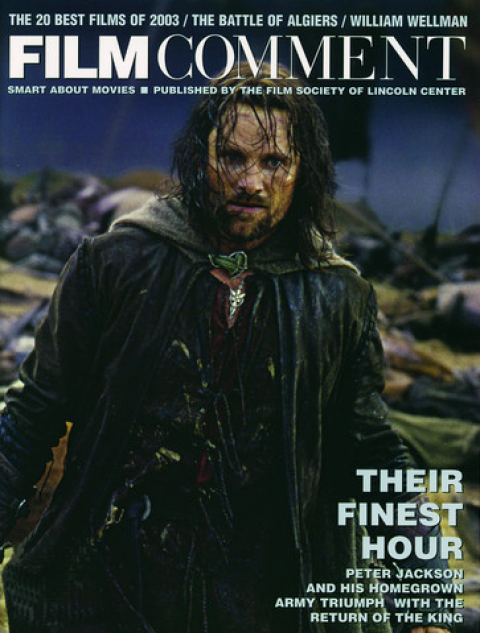There was little originality, dramatic authenticity, or even fun in the film music of 2003. The big conventional orchestral scores—whether for Middle Earth, the high seas, or never-never land-were predictable and generic. So many others were just pop-song collections or prefab kits of cybersound. We kept listening, though. Here are 10 titles whose scoring, if sometimes only briefly, rang true.
21 Grams (Gustavo Santaolalla) Sometimes a film score’s distinctive design or instrumentation can substitute for real composition. Santaolalla’s overcranked, deep-throated guitar gives soul to these minimal blues cues. When coupled with the accordion-like sound of the harmonium and bandoneon or, in one cue, with the Kronos Quartet, those guitar musings suggest the mournfulness that the film ultimately fails to achieve.
Angels in America (Thomas Newman) A massed string orchestra playing in clean ethereal unison lines is the strongest, most memorable voice in this fantasia about AIDS and Eighties America. The score is a misty dream, occasionally disturbed by dissonanat brass or sobered by electronic sounds implying the clockwork coldness of the universe. But Newman’s warm strings persist with a message of peacemaking reconciliation.
The Cooler (Mark Isham) Isham’s muted trumpet goes from cool to acid as old Las Vegas is replaced by new and the casino workers go through their own evolutions. The sax speaks for William H. Macy’s character, and artificial strings support the acoustic soloists with a sound that’s as hot as Vegas neon.
Girl With a Pearl Earring (Alexandre Desplat) Without resorting to baroque clichés, Desplat scores with admirable restraint and subtle shadings, deftly using rests and silences to hint at the reluctance of the affair between Vermeer and his servant.
Looney Tunes: Back In Action (Jerry Goldsmith) Looney Tunes and Goldsmith were born in the same year, 1929. The 75-year-old composer has compiled a remarkably fresh sound here, with an animator’s eye for controlled chaos: partly a tribute to original composer Carl Stalling, partly his own daffy slant on the genre.
The Sea Is Watching (Teizo Matsumura) Akira Kurosawa’s last script, about a quiet, respectable brothel, is scored with a series of cues that serve as narrative chapter headings. The main flute-then-viola theme, in soft dotted rhythms, sets the tone-slightly apprehensive yet reassuring.
S.W.A.T. (Eliot Goldenthal) Who knows why they hired a classicist to score this police actioner. But his musical mayhem, which uses complex compositional devices to recreate pumping funk, is really secret satire. Titles include “The AK-47 Scherzo,” “The Fascist Shuffle,” and “”3 Chords in 2 Minutes.”
Together (Zhao Lin) With an entire violin repertoire sampled for this tale of a musical prodigy, it’s remarkable that the intro music, interludes, and postlude are noticeable at all and succeed in framing the complex relationship between a boy and his father. Flute and strings supply a sense of wonder.
Zemsta (Wojciech Kilar) Kilar supplies a formal, courtly accompaniment-with a knowing wink acknowledging the burlesque—to Andrzej Wajda’s rich period settings and Roman Polanski’s outrageous performance.









